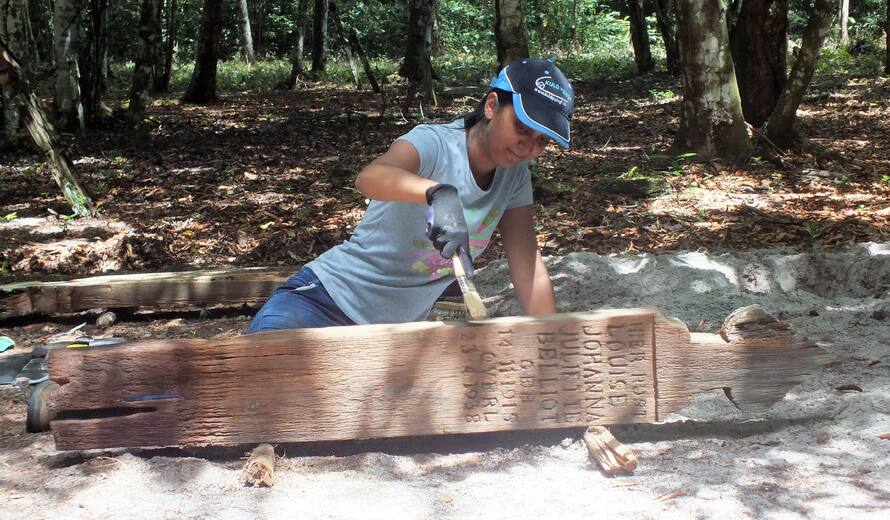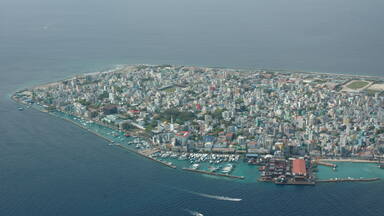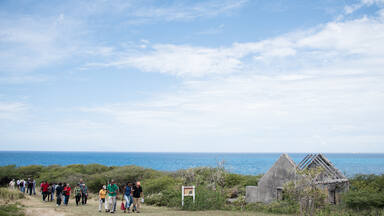The Making of a World Heritage site in Suriname
The Jodensavanne Archaeological Site: Jodensavanne Settlement and the Cassipora Creek Cemetery
Twenty-five years after being included in the Tentative List of Suriname, this serial property was inscribed on the World Heritage List in 2023. “The Jodensavanne Archaeological Site: Jodensavanne Settlement and Cassipora Creek Cemetery”, is comprised of two 17th-century component parts that are historically interconnected, namely the remnants of the former Jewish Settlement named ‘Jodensavanne’ and the Cassipora Creek Cemetery, the latter being a remnant of an earlier Jewish settlement. They bear an exceptional testimony within the Atlantic Sephardic diaspora of a Jewish civilization in Suriname that was granted the most extensive arrangement of privileges and immunities (territorial and communal autonomy) known in the early modern Jewish world, and that existed in a slave society and a frontier zone.
The story of this nomination intends to inspire countries, especially in the Caribbean to continue preparing new nominations despite the many challenges faced in preparing a nomination dossier, but also to showcase the importance and impact of financial support of donors among other things, to facilitate the nomination process.
Nomination process
A vital inventory of all gravestones at the property, not explicitly aiming at World Heritage nomination, was executed from 1999 to 2002, with the support of Rachel Frankel, Aviva Ben-Ur, Philip Dikland and many others under the leadership of Guido Robles, the former Jodensavanne Foundation board president.
From 2002 onwards to 2023, several actions were undertaken to prepare a nomination dossier. The very first draft nomination dossier dates to 2003, but this was far from being a draft. In 2008 the Jodensavanne Foundation successfully received funds from the Netherlands Funds-in-Trust (NFiT) at UNESCO for the development of the “Jodensavanne and Cassipora Cemetery Management Plan 2008-2012”, the first management plan to be developed for the property. The development of the Management Plan started in 2007 and was finalized in 2008, under the direction of Harrold Sijlbing of the SANTOUR Foundation (Suriname Alliance for Nature Conservation and Sustainable Tourism). The Plan was essentially meant for the daily management of the site, but also for its proposed nomination for inscription on the World Heritage List.
The preparation of this Management Plan was not possible without the consultation and assistance of a wide range of individuals and organizations such as the board of the Jodensavanne Foundation, local community leaders, villagers, women’s associations, plantation owners, tourism organizations, indigenous associations, Afro-Surinamese associations, local district authorities, holiday resort owners, Jewish community members and many more. Various documents have been reviewed during the preparatory process and lengthy debates have contributed fundamentally to the plan. A tourism survey was conducted, while workshops, public hearings, and meetings on location as well as in the capital city Paramaribo with indigenous and African slave descendants from neighbouring villages and plantations, have been instrumental means to acquire broad consent from relevant stakeholders. A final stakeholder meeting was executed in the neighbouring village of Redi Doti to accommodate all interested parties and to achieve general approval for the Management Plan, including the demarcation of the serial property and its buffer zones. Finally, thanks to limitless patience and lengthy debates and negotiations with the local communities, an agreement (Memorandum of Cooperation on joint management of the cultural property) was reached in 2007 and 2008 between the Jodensavanne Foundation and the village council of Redi Doti, which marked a unique moment in the history of the land rights issue of Surinamese Indigenous communities.[1]
Ten years after the first draft version of the nomination dossier, UNESCO co-organized Caribbean Training Course in the Preparation of Nomination Dossiers was held in March 2013 in Antigua and Barbuda under the framework of the World Heritage SIDS programme. After this training course, the Jodensavanne Foundation prepared an updated but far from completed draft nomination file. Despite the incompleteness of the dossier, the Foundation decided in September 2013 to submit the draft for review by the World Heritage Centre and in October 2013 the State Party received valuable comments and suggestions to revise and complement the nomination dossier.[2]
During the UNESCO Meeting on Capacity Building on Heritage Conservation in the Caribbean Small Islands Developing States (SIDS) held in May 2014 in St. Maarten, the ‘Philipsburg Declaration and Action Plan on Caribbean Capacity Building Strategy for the Caribbean SIDS’ was approved by the participating countries, including Suriname. In this Declaration, SIDS State Parties were encouraged to undertake specific actions. Suriname for instance, was stimulated to advance the nomination of its second cultural property by January 2015. At that time, the Jodensavanne Foundation made important steps to complement the nomination dossier by conducting an aerial and land survey of the nominated property, making an inventory of the attributes, conducting archaeological research through the involvement of the Anton de Kom University of Suriname, and the development of maps of the property.[3]
Eager to move forward with the nomination dossier, the Foundation implemented a project named “Preparatory support for Jodensavanne, Suriname” in 2017, which was once again financed by the UNESCO NFiT within the framework of supporting “Shared Heritage”. The project consisted of conservation and research activities at the former 17th-century Jodensavanne settlement. The conservation part aimed at necessary conservation measures to minimize the deterioration of the historic wooden grave markers of the African-Creole Cemetery at Jodensavanne, while the research part of the project consisted of obtaining more sophisticated archaeological equipment (a Ground-Penetrating Radar, GPR) to collect, record and analyze data of subsurface structures and street plan of the Jewish settlement for a better understanding of the settlement structure. Based on this project a new nomination submission date was set by 2019, but was postponed to 2020, and later to 2021. The nomination was eventually submitted in January 2022, followed by an ICOMOS technical evaluation mission which visited the nominated property from 5 to 9 September 2022 and recommended that the property be inscribed on the World Heritage List.
The nomination process for “The Jodensavanne Archaeological Site” was a lengthy and challenging process, but perseverance paid off. On 24 September 2023, the World Heritage Committee at its extended 45th session in Saudi Arabia inscribed the property on the World Heritage list, based on criterion (iii), making it Suriname’s third world heritage site. This important milestone is not an end, but rather the beginning of a new chapter in enhancing and protecting the Outstanding Universal value (OUV) of this intriguing property, as the NFiT is aiding this new World Heritage Property by financing further archaeological investigations for the period 2024-2026 to gain a better understanding of the settlement structure and the residential history.
Involvement of the university, local communities and volunteers
Worth mentioning is the involvement of the Anton de Kom University of Suriname during the preparation of the nomination dossier. In 2015-2016 History students of the Faculty of Humanities minoring archaeology conducted archaeological excavations at the Military Post Jodensavanne. The findings of the archaeological investigations were incorporated in the nomination file. The excavations were done as part of an Archaeological Field School at Jodensavanne which resulted in the graduation of three students with Jodensavanne as their major topic.[4]
Also, the engagement of local communities and volunteers [5] during the execution of projects should be memorated as important contributions to the nomination process.
Decisions (1)
The World Heritage Committee,
- Having examined Documents WHC/23/45.COM/8B and WHC/23/45.COM/INF.8B1,
- Inscribes the Jodensavanne Archaeological Site: Jodensavanne Settlement and Cassipora Creek Cemetery, Suriname, on the World Heritage List on the basis of criterion (iii);
- Adopts the following Statement of Outstanding Universal Value:
Brief synthesis
Located on the densely forested banks of the Suriname River, the Jodensavanne Archaeological Site in northern Suriname is a serial property with two component parts that illustrate early Jewish colonisation attempts in the Atlantic World. The Jodensavanne Settlement, founded in the 1680s, includes the ruins of what is believed to be the earliest synagogue of architectural significance in the Americas, along with cemeteries and the foundations of brick buildings, boat landing areas, and a military post. The Cassipora Creek Cemetery is the remnant of an older settlement founded in the 1650s which ceased to exist three decades later when its inhabitants migrated two kilometres downstream to Jodensavanne. Unusual for the Atlantic Sephardic diaspora, these early Jewish colonies were not situated in existing urban settings, and were longer-lived than many. Located amidst Indigenous territory, the settlements were inhabited, owned, and governed by Jews who lived there together with free and enslaved persons of African and Indigenous descent. The settlements had the most extensive arrangement of privileges and immunities known in the early modern Jewish world.
Criterion (iii): The Jodensavanne Archaeological Site is an exceptional testimony within the Atlantic Sephardic diaspora of a Jewish civilisation that was granted territorial and communal autonomy, a Jewish 'state within a state' that existed from the 17th to the 19th century in a slave society and a frontier zone. The settlement existed in an area adjacent to Indigenous territories, and the Jewish settlers were instrumental in its defence. Several of the material remains in the property are exceptional due to their age (the cemeteries) and their architecture. Furthermore, the archaeological evidence at the settlement and cemeteries points towards differing degrees of coexistence and conflict between cultures and ethnocultural groups, including Jews, Indigenous peoples, enslaved Africans, and European colonists.
Integrity
The integrity of the serial property is based on the Jodensavanne Settlement component part, with the remains of buildings, cemeteries, and several other elements that played important roles in the development and daily life of the Jewish community, including the boat landings that connected Jodensavanne with the river, the military post and part of the defences, the medicinal springs, sacred Ceiba trees, and a sand pit. The Cassipora Creek Cemetery component part’s gravestones have inscriptions in Hebrew, Portuguese, Spanish, Dutch, Aramaic, and combinations of these languages. The Cassipora Creek Settlement, the first autonomous Sephardic Jewish community in the colony of Suriname and precursor of the Jodensavanne Settlement, is not yet located, but its probable location is included in the buffer zone.
Authenticity
The attributes that convey the Outstanding Universal Value are substantially authentic in terms of their forms and designs, materials and substance, and locations and settings. Ongoing maintenance work is based on the advice of specialists, and is done with great care regarding the original materials and substance.
In general terms, the authenticity of the remains as well as their settings do not raise any serious concerns at the moment. There is a need to strengthen protection of the surroundings of the property’s component parts in order to avoid potential negative impacts to the authenticity of these settings in the future.
Protection and management requirements
The two component parts of the property are recognised as archaeological monuments under the Monuments Act of 2002 and have been legally protected at the highest level since 2009 through Ministerial Resolution No. 873. The Jodensavanne Foundation, created in 1971, is the official management authority of the property. It has the right of use for rehabilitation, conservation, management, and touristic purposes, and holds the official land rights of the property. Local Indigenous peoples are the traditional custodians of the archaeological site, which adds another layer of protection. The property is co‑managed by the Indigenous village of Redi Doti. A Memorandum of Cooperation between the Redi Doti Village Council and the Jodensavanne Foundation establishes that the Indigenous village of Redi Doti is co-responsible for the preservation, protection, and management of the cultural heritage of the Jodensavanne Archaeological Site, while the Jodensavanne Foundation recognises its shared responsibility for the sustainable socio-economic development of Redi Doti. Any changes to the management plan as well as any tourism, recreation or construction projects must be agreed to by both partners. The Memorandum of Cooperation is evaluated and signed by the two partners every four years.
The Jodensavanne Settlement and Cassipora Creek Cemetery Management Plan 2020-2025 gives guidance for the management, protection, conservation, and promotion of the Jodensavanne Archaeological Site. Operation of the property depends heavily on income from entrance fees and private donations. An annual subsidy from the Ministry of Education, Science and Culture is being pursued to help cover the operational costs of the property.
- Recommends the State Party to give consideration to the following:
- Obtaining adequate and stable funding for the operation and maintenance of the property,
- Finalising the designation of the Special Protected Forest zone,
- Preparing and/or centralising the inventories of archaeological finds and the accompanying information, and presenting this information on detailed topographical maps and/or in a Geographical Information System (GIS),
- Identifying quantifiable indicators for monitoring the state of conservation of all the attributes of the property, as well as general environmental conditions and changes to its surroundings, in order to help detect long-term developments at the property and its surroundings,
- Elaborating an integrated risk preparedness plan for the two component parts,
- Evaluating the current land use (e.g., location of visitor installations) with the objective of developing a land-use plan for the property,
- Exploring the possibility and relevance of including additional interest groups and stakeholders in the property management process,
- Determining the carrying capacity of the property,
- Further exploring the possibility of including the remains of the Cassipora Creek Settlement in the property’s boundary, through a minor boundary modification request, if its location and state of conservation can be accurately determined,
- Undertaking research on the interrelations between the different groups (Jewish people, local African descendants) that were living together in Jodensavanne in order to further the understanding of the property;
- Requests the State Party to submit to the World Heritage Centre by 1 December 2024, a report on the implementation of the above-mentioned recommendations for examination by the World Heritage Committee at its 47th session.





